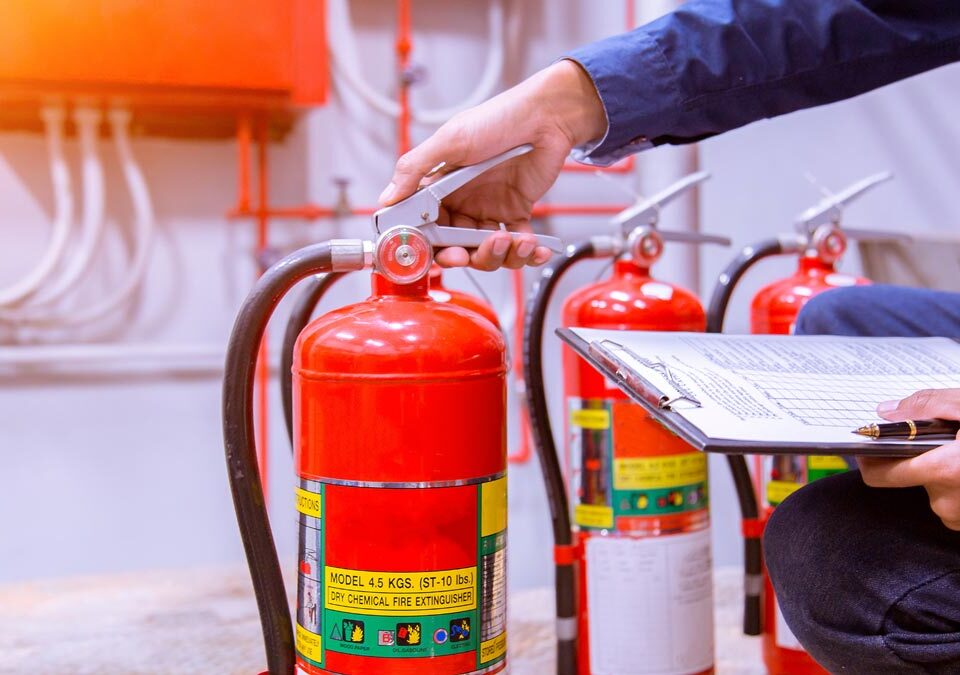How to Calculate Fire Load: Formula, Method, and Importance Explained

Comprehensive Guide to IS 14489: Safety Audit Checklist and Standards
July 2, 2025
14 Elements of Process Safety Management: A Comprehensive Guide to the PSM System
July 8, 2025Introduction
Understanding fire load calculation is essential for assessing the potential fire hazard in a building. Fire load refers to the total amount of combustible material present in a space and the energy it can release during a fire. It is a crucial parameter used in fire safety planning, helping architects, engineers, and fire protection professionals design safer structures.
Accurate fire load calculation allows for better risk assessment and determines the need for fire protection systems such as sprinklers, alarms, and fire-resistant materials. It’s especially important in commercial buildings, warehouses, factories, and high-density residential structures where fire hazards can escalate quickly if not managed properly.
By calculating the fire load, safety teams can ensure that buildings comply with local codes and international safety standards, reducing the risk of catastrophic fire damage and loss of life.
What is Fire Load?
Fire load is the measure of the total potential heat energy released by all combustible materials in a given area during a fire. It is typically expressed in megajoules per square meter (MJ/m²). The fire load calculation takes into account the type, quantity, and calorific value (energy content) of combustible materials like wood, paper, plastics, and textiles.
Fire Load Formula (Basic):
Fire Load (MJ/m²) = Total Heat Content of Combustibles (MJ) / Floor Area (m²)
For example, in a library, the fire load would include the paper in books, wooden shelves, and any other flammable furnishings. If the total heat content of combustibles is 40,000 MJ and the floor area is 200 m², the fire load = 200 MJ/m².
Fire load calculation helps determine the fire severity a structure might experience and guides decisions about fire protection measures, evacuation planning, and structural fireproofing.
Importance of Fire Load in Safety and Design
- 🔥 Fire load is a key factor in determining the intensity and spread of a potential fire within a building.
- 🏗️ It directly impacts structural design decisions, especially the selection of fire-resistant materials and building layouts.
- 📊 Fire load calculation helps assess how much heat energy could be released, guiding the implementation of fire safety systems like alarms, sprinklers, and fire barriers.
- 🚒 Fire departments rely on accurate fire load data to plan effective evacuation strategies and emergency response protocols.
- 📏 Building codes and fire safety regulations often mandate fire load calculation formula usage to ensure compliance and risk reduction.
- 🏢 Properties with high fire loads, such as warehouses and factories, may require special fireproofing or automatic suppression systems.
- 💼 Insurance companies use fire load assessments to evaluate fire risks and determine premiums or coverage limitations.
- ✅ Understanding how to calculate fire load ensures safety, minimizes property loss, and saves lives in fire emergencies.
Fire Load Calculation Formula
To assess the fire risk in a given space, professionals use a standardized fire load calculation formula:
🔷 Fire Load (MJ/m²) = Total Calorific Value of Combustibles (MJ) / Floor Area (m²)
This fire load formula helps determine how much heat energy could be released during a fire per square meter of space. Here’s a breakdown of each component:
- 🔥 Calorific Value (MJ/kg):
- This represents the amount of heat energy released when a material is completely burned.
- Each combustible material (wood, paper, plastic, etc.) has a different calorific value.
- Example: Paper = ~16 MJ/kg, Wood = ~18 MJ/kg.
- This represents the amount of heat energy released when a material is completely burned.
- ⚖️ Weight of Combustible Materials (kg):
- This refers to the total weight of all flammable substances present in the area.
- Multiply the calorific value by the material weight to get the total heat contribution of each item.
- This refers to the total weight of all flammable substances present in the area.
- 📐 Floor Area (m²):
- The total surface area of the space under consideration.
- It normalizes the total heat energy over the size of the space.
- The total surface area of the space under consideration.
🔍 Example:
If a room contains 1000 kg of wood (18 MJ/kg) and has a floor area of 200 m²:
Fire Load = (1000 × 18) / 200 = 90 MJ/m²
This fire load calculation formula provides essential data for risk management, safety design, and fire protection system planning.
How to Calculate Fire Load: Step-by-Step Method
To understand how to calculate fire load, follow this simple method used by fire safety professionals and structural engineers:
✅ Step 1: List All Combustible Materials
- Identify all combustible items in the room or building (wood, paper, fabrics, plastics, etc.).
- Find the calorific value (MJ/kg) for each material from standard reference tables.
✅ Step 2: Multiply Calorific Value by Material Weight
- Calculate the energy contribution of each item using:
Heat = Calorific Value × Quantity (kg) - Example:
- Wood (18 MJ/kg) × 500 kg = 9000 MJ
- Paper (16 MJ/kg) × 200 kg = 3200 MJ
- Wood (18 MJ/kg) × 500 kg = 9000 MJ
✅ Step 3: Add Total Heat Content
- Sum the individual heat contributions of all combustible materials.
Total Heat = 9000 MJ + 3200 MJ = 12,200 MJ
✅ Step 4: Divide by Floor Area
- Measure the floor area of the space in square meters.
- Apply the fire load calculation formula:
Fire Load (MJ/m²) = Total Heat Content / Floor Area - If the floor area is 100 m²:
Fire Load = 12,200 MJ / 100 m² = 122 MJ/m²
🔍 Real-World Example: Warehouse
A small warehouse stores wooden crates and paper packaging. By applying the above steps, the total heat content is calculated and divided by the warehouse’s floor area to find the fire load, helping determine the need for sprinkler systems or fire-resistant walls.
Standards and Guidelines for Fire Load Calculation
To ensure safety and compliance, fire load calculation must follow national and international standards:
- 📘 NBC (National Building Code of India):
- Provides detailed fire safety requirements for different building occupancies.
- Specifies limits for fire load to classify buildings as low, moderate, or high hazard.
- Provides detailed fire safety requirements for different building occupancies.
- 📏 IS 875 Part 5 (Indian Standard):
- Covers the calculation of imposed loads, including fire loads, on buildings.
- Used by structural engineers for load-based design and fire resistance planning.
- Covers the calculation of imposed loads, including fire loads, on buildings.
- 🔥 NFPA (National Fire Protection Association) Standards:
- Widely used international codes like NFPA 557 provide guidelines for fire load determination and hazard analysis.
- Widely used international codes like NFPA 557 provide guidelines for fire load determination and hazard analysis.
✅ Fire audits often require documentation of fire load calculations to verify whether fire protection systems, such as sprinklers, extinguishers, and structural materials, meet prescribed safety thresholds.
Conclusion
Understanding and applying fire load calculation is vital for designing safe, compliant, and fire-resilient buildings. By accurately determining the total heat potential of combustible materials, professionals can evaluate the level of fire risk and implement effective fire protection systems.
Whether it’s an office, factory, or warehouse, calculating fire load helps in selecting the right materials, designing fire-resistant structures, and ensuring timely evacuation plans. It also plays a crucial role in regulatory compliance, especially during a formal Fire Audit or Safety Audit.
For high-risk industries, integrating tools like the Hazop Study and Process Safety Management is essential for a holistic fire risk assessment.
Engaging a trusted Safety Consultant ensures expert evaluation, industry compliance, and proactive solutions to mitigate fire hazards effectively. Regular monitoring and updated calculations are key to maintaining workplace safety and protecting both people and assets.



